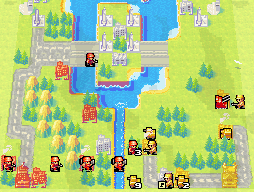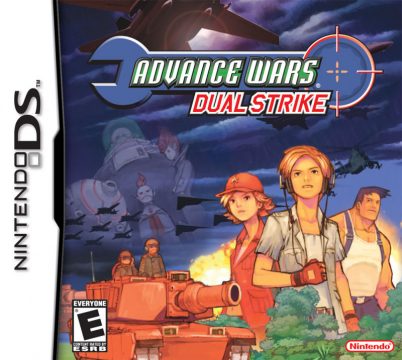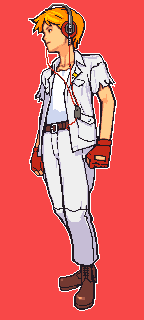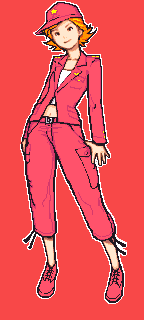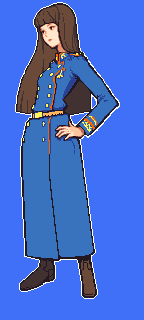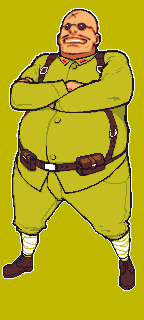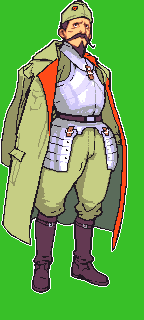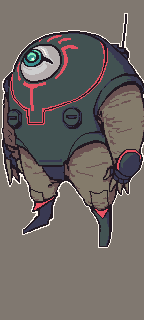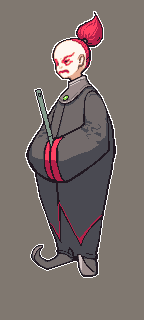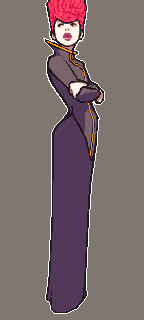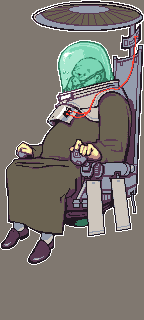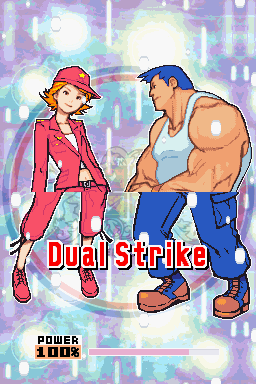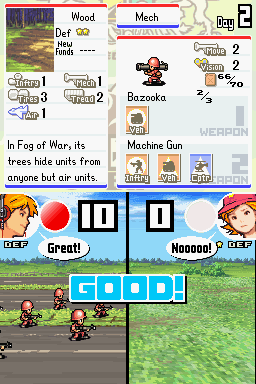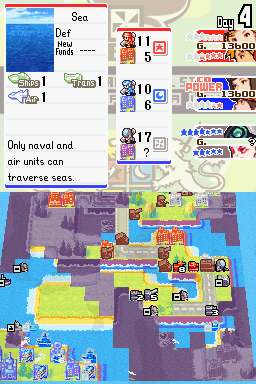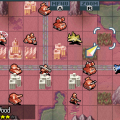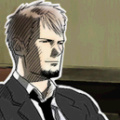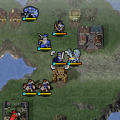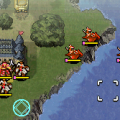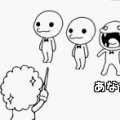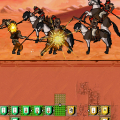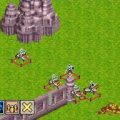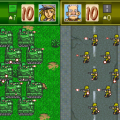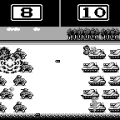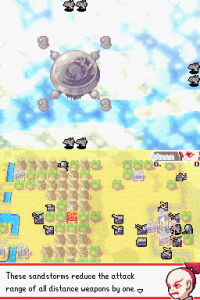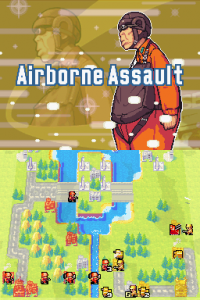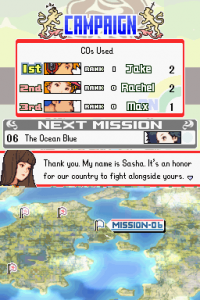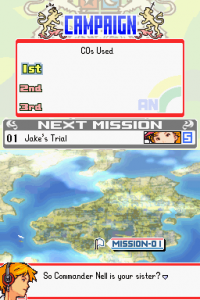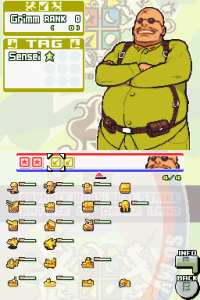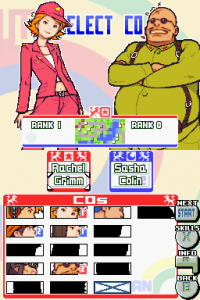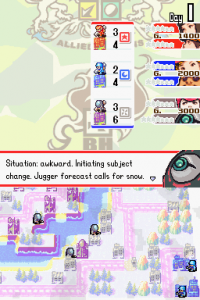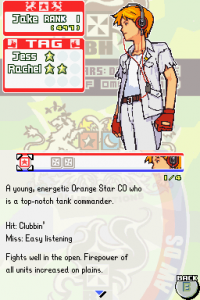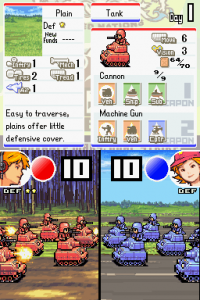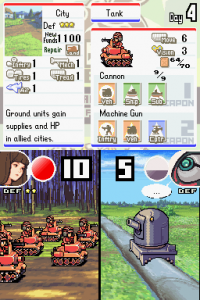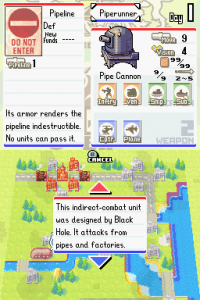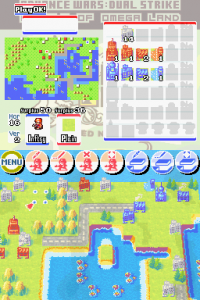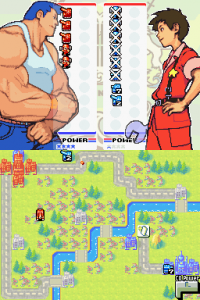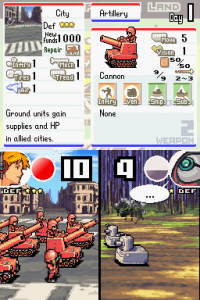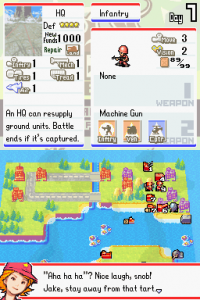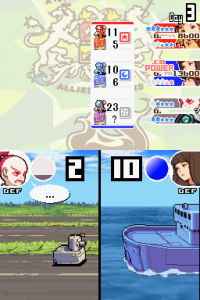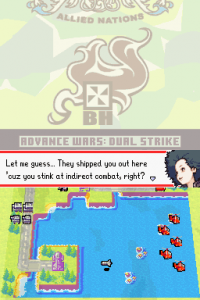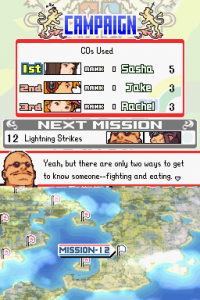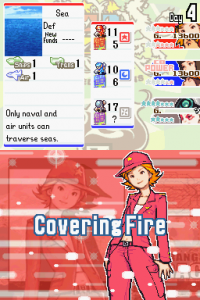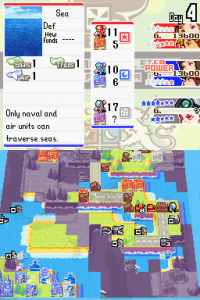In an attempt to repeat the success of Advance Wars, the early outings of the DS saw the addition of Advance Wars: Dual Strike. Seemingly trying to do things sufficiently different, Dual Strike takes place upon another continent in a different area of the Wars World geoscape called Omegaland. Recognizing Black Hole as an international threat, the four nations have formed the Allied Nations and have deployed various COs in an effort to curb the threat there. While the preceding game featured many of the same COs, and added some new ones on top of that, Dual Strike takes a bit of a different approach, introducing the player to new COs first and familiar ones later. Dropping the ball however is the villainous cast, with two of the new COs being borderline copy-pastes of ones introduced in Advance Wars 2.
Allies
Jake/John
Taking the place of Andy as ‘the new guy’, Jake is the first CO the player will control in Dual Strike. Depending which regional version of the game is being played, his character is wildly different, though in all cases he’s rather friendly. Either a communications specialist or a goonball try-hard leet-speaker; the new Red/Orange Star poster boy’s units deal greater damage when standing on Plains. His Powers increase the mobility of his vehicles, and the range of his indirects.
Rachel
Since Red/Orange Star didn’t really get anyone new in the prior entry, they make up for lost time by introducing a second CO with Rachel. Rachel is hard-working and cheery; as well as Nell’s younger sister and the head of operations in Omega Land. When her units repair at cities, her units recover an extra point of damage. Her Powers are a lesser form of Nell’s luck, and firing three silo missiles at her opposition.
Sasha
Providing the first feminine presence for Blue Moon in the history of the franchise is Sasha, elder sister of Colin. Contrasting Colin’s insecurity and uncertain nature, Sasha is to the point and assertive. Keeping with the family business of being rich, she receives more funding from captured properties. Sasha’s Powers allow her to reduce the power bars of all opponents, and to receive funds for damage dealt.
Grimm
Supposedly called ‘Lightning Grimm’ by his peers, Grimm is Yellow Comet’s addition to the Allied Nations and the understudy of Sensei. Loud and reckless, Grimm’s army is true of their commanding officer in both dealing and taking great degrees of damage. Grimm’s Powers simply make all of his units hit even harder. His real power however is having the best music theme in the game.
Javier
Adding to Green Earth’s roster is the chivalrous and somewhat off-beat Javier. Javier’s character is mostly an ‘actually useful’ interpretation of Don Quixote, as his mannerisms are old-fashioned and he has an interesting relationship with Com Towers. His units take reduced damage from indirects, and each Com Tower under his control raises his unit’s defense from everything. Javier’s Powers double and triple his bonuses from Com Towers, respectively.
Bolt Guard
Jugger
Debatably a robot or just some goon pretending to be one, Jugger is the first of the new COs of Black Hole, known as the Bolt Guard. Given his gimmick, Jugger debatably doesn’t have a personality; though his dialogue is angled to be humorous. Jugger’s army and Powers are basically a copy-paste of Flak’s, as Flak does not appear in Dual Strike‘s story.
Koal
Affecting the look of an old-time Asian scholar is the arrogant and verbose Koal. Much like Jugger being ‘basically Flak’, Koal is ‘basically Adder’ since Adder is also MIA during the narrative. The differing points being that Koal gets damage bonuses on Roads, and his Power economy is worse. This leaves Koal debateably the worst CO in the series. His Powers provide extra mobility to all units, and enhance his Road bonus.
Kindle
Effectively the leader of the new three stooges is the vain and condescending Kindle. With the air of being a mover-and-shaker socialite, Kindle is functionally a ‘city specialist’. Any property that generates income enhances her army to deal significant damage when standing upon it. Her Powers will damage enemy units on income-properties, enhance her city bonus tremendously, and have all units deal heightened damage dependant upon the number of income-properties in her control.
Von Bolt
The new leader of Black Hole is the mysterious Von Bolt. Little is known about him other than that he is tremendously old and callous. Combatively, Von Bolt is like a ‘reasonable Sturm’ in that his army is stronger and tougher in general but without being too much, and his one Power is very expensive. Ex Machina, Von Bolt’s 10-star Super Power deals a single silo missile’s worth of damage to a semi-random cluster of units, but causes units hit to lose their next turn.
The big innovations this time around are the Tag and titular Dual Strike systems, as well as the Medals system. As the player continues to play the game, they raise the levels of the COs they choose to play as, in addition to a global level. The global level unlocks medals for the COs to use that augment their gameplay in basic ways, such as doing more direct damage, or having reduced movement costs in specific terrain. CO levels enable the use of more medals, and at max rank enables alternate costumes to be available. The Tag system on the other hand is probably the best of these systems, in that the player deploys two COs at once, and upon the conclusion of the turn can opt to end it with a tag. This leaves the units in the control of the other CO and has that CO controlling the army for the next turn. This allows for interesting synergies and adds well to the already rather dynamic nature of the core gameplay. The final addition, unfortunately, is basically the single worst inclusion to the entire series.
The Dual Strike is prepared by filling both CO’s meters to full, upon execution they will receive a team bonus (or penalty) to damage and the current CO will take their remaining turn as if they’d used their Super CO Power as normal. Upon conclusion, however, the game will force a tag and the other CO will use their own Super and proceed to take a second turn before the opposing team can take a turn at all. This completely breaks the game, because providing a super-powered double-turn will unerringly decimate the opposing force beyond the degree of recovery, even when they inevitably throw a counter Dual Strike of their own in retaliation. Beyond this, some combinations take the matter beyond points of reason, as several characters do global damage with their Supers, leaving the opposing army in tatters even before any engagements are taken. While this can be fun in the campaign mode, it very quickly shows its failings when attempting to have a fair game with another player.
There are some more minor additions in the form of alternative gameplay modes. There’s Survival mode, which provides a large sum of initial funds with no manner with which to accrue more. The player is tasked with getting through as many prescribed levels as possible as quickly as possible given their finite resources. Survival can make for a decent test of one’s skills and the viability of given COs, and contributes to the leveling mechanic. There’s also the Combat mode, which sees the units operating in real-time in the style of the Atari 2600 game Combat. Each unit available has differing movement speeds, shot attributes and durability. Available Cos can use their CO powers to bolster their units much like in the core game. If linked up to a DS that does not have a copy of Dual Strike, the Combat mode will be available to play. Unfortunately, the Combat mode doesn’t really have much depth to it and there’s no incentive to involve oneself beyond the novelty of it.
Another change to Dual Strike is a more controversial one. The overall gameplay has been adjusted to emphasize damage output, with several more defensive COs now set up with kits of greater aggression, drastically changing their playstyles. While some find this enjoyable in its own manner, the end result is that many of the COs feel rather samey. This decision may have been made to speed up play, or perhaps the developers fealt that COs with more defensive kits needed to be taken down a peg. However in the overall balance scope it doesn’t actually make any of the more egregious defensive COs any less overpowered, and Dualstike even introduces another CO that benefits from overly-effectual defensive bonuses. The entire decision is very odd and those that enjoy this decision tend to find themselves in the minority.
To its credit, Dual Strike makes use of the DS hardware by displaying the terrain and unit information panels upon the top screen at all times, which makes for easy reference to just what a unit’s capabilities are even mid-move. Several ‘biome sets’ have been added as well, providing some visual terrain variety without changing the mechanics of the terrain. Unfortunately the added tilesets are a desert and a wasteland, which are mighty similar and don’t particularly look great. Further hindering the visual effort is the fact that the lower screen which has all of the action on it is presented as something of a slanted perspective, which would look nice except that the sprites scale from the fore to the distance very poorly, with many jagged pixels. The top screen doesn’t do this on the rare occasion it is used, unfortunately there’s no setting to disable this visual effect. The themes of the new COs fortunately are rather solid and continue to be effective expressions of their characters. The hitch comes from the fact that the old themes that have been converted from the GBA sound chip necessitated some adjustments, and a fair number of them just don’t really sound as good.
Speaking of the top screen, a few campaign missions involve the top screen by providing a visual reference or even a second battle-field that a second CO is intended to operate. The winner of these sub-battles will have the second CO join the main CO as a tag partner, making the remaining mission a 2-1 affair. This causes the maps to basically be decided by this second front and leaving the main mission map largely pointless and this feature kind of a waste. It doesn’t help that the first time this is presented, the player is forced to rely on the AI to control the second front. This can result in a variety of issues both immediate and long form as the AI is only so good, and the player might not realize they can switch to manual control in later missions
While the quality of the writing has never really been a focal point of the series, any dumb points of it could be easily written off as being dumb-cartoon-logic. Dual Strike tries to present something resembling a more serious narrative and falls utterly flat on its face in doing so. Several of the new characters will be strongly hit-or-miss in how they’re perceived, and the strictly linear nature of the level structure and the necessity of the opponents having multiple enemy COs at once results in overly simplistic and over-exposed characters that can’t really carry the game. The game also suffers from rather trite narrative developments that are functionally rehashes of plot points in prior games that the differing tones could get away with there, but not here.
Several COs and core systems have been revamped seeming to encourage more aggressive play, as old systems now provide damage bonuses that they previously did not, powers have been changed in various ways to be less defensive and more offensive in nature, and the newly added Com Tower structure will provide the army that captures it with a damage boost. While Dual Strike boasts the largest count of COs of any game in the franchise, the balance pass it settles upon aids an insufficient number of COs and many of them end up feeling samey as a result.
On the whole, Dual Strike has some favorable things going for it, but it ends up being a quantity over quality situation and one can’t really make full use of the features it provides and have a lasting sense of enjoyment.
